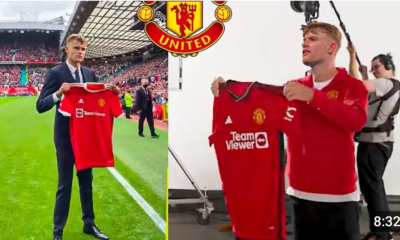Blog
Imagine a scenario where college athletes are required to spend four years in college before…
Reimagining College Basketball: What If Athletes Were Required to Play Four Years in College Before Turning Professional?
In the ever-evolving landscape of basketball, debates about player development, the path to the NBA, and the role of college athletics are more heated than ever. One provocative idea gaining traction among fans, analysts, and former players alike is the notion of implementing a mandatory four-year college playing requirement before aspiring professional basketball players can enter the NBA draft. This hypothetical scenario would fundamentally reshape the sport, influence player development, and alter the dynamics of college and professional basketball ecosystems.
### The Current Path: A Fast Track to the NBA
Under the existing system, young basketball talent often faces a clear choice: enter the NBA Draft directly from high school or attend college for one or two seasons before turning professional. The NBA’s current eligibility rules stipulate that players must be at least 19 years old and one year removed from high school, often leading top prospects to spend only a single season at college or to bypass college altogether via the G League Ignite or international pathways.
This accelerated timeline has resulted in a proliferation of one-and-done players—highly talented athletes who spend a brief period in college, if at all, before embarking on professional careers. While this trend has produced immediate NBA star power, it has also been criticized for potentially stunting player development, increasing injury risk, and devaluing the college game.
### The Hypothetical: A Four-Year College Commitment
Imagine a transformative policy where college basketball players are required to spend a full four years in college before being eligible for the NBA draft. Such a rule would enforce a more gradual transition from amateur to professional status, emphasizing education, maturity, and skill development over a longer timeframe.
This concept is not entirely new in the context of college sports—many athletes already commit to four-year programs—but the idea here is to make it a strict, universal requirement for NBA eligibility, effectively delaying the pipeline of young talent into the league.
### Potential Benefits of a Four-Year Requirement
#### 1. **Enhanced Player Development**
One of the most compelling arguments in favor of a four-year college requirement is that it allows players more time to develop their skills, physical conditioning, and basketball IQ. Unlike the current model, where some prospects peak early and leave college with only a season or two under their belts, a four-year tenure would give athletes ample opportunity to refine their game against high-level competition.
This extended development period could lead to more polished, mature players entering the NBA, potentially reducing the number of “raw” prospects who struggle to adapt at the professional level. It would also give players time to learn important life skills, such as leadership, teamwork, and handling the pressures of fame.
#### 2. **Educational Benefits**
Mandating four years in college emphasizes education and personal growth. Many student-athletes who stay in school longer graduate with degrees, which can provide security and opportunities outside of basketball—a significant consideration given the unpredictable nature of sports careers.
#### 3. **Improved College Basketball**
A universal four-year requirement could bolster the college game by increasing the level of experience and maturity among players. This could make college basketball more competitive and exciting, as teams would be composed of seasoned athletes capable of executing complex systems and strategies.
#### 4. **Reduced Short-Term Talent Fluctuations**
Currently, the NBA benefits from a constant influx of highly talented but often inexperienced young players. A four-year rule might stabilize the talent pipeline, ensuring that only those who are truly ready and committed to the sport make the jump, potentially leading to a more balanced and sustainable league.
### Challenges and Concerns
While the idea has its merits, implementing such a policy would also raise significant challenges and concerns that need to be addressed.
#### 1. **Impact on Player Aspirations and Opportunities**
Many top prospects view the NBA as their ultimate goal, and a four-year commitment could delay their career ambitions significantly. This might discourage some talented athletes from pursuing basketball altogether, especially those from disadvantaged backgrounds who see professional sports as their best or only opportunity for financial security.
#### 2. **Increased Injury Risks and Burnout**
Extending college careers could lead to more injuries due to prolonged physical strain. Additionally, players might face increased pressure and burnout from staying in a demanding college environment for four years, potentially diminishing their enthusiasm and performance.
#### 3. **Potential Loss of Talent to International and Alternative Pathways**
If the NBA enforces a four-year college requirement, prospects might seek alternative routes—such as international leagues, the G League Ignite program, or other professional options—to bypass college altogether. This could diminish the NCAA’s influence and revenue, impacting college sports programs and universities financially.
#### 4. **Legal and Logistical Hurdles**
Implementing such a policy would require extensive cooperation between the NBA, NCAA, and other stakeholders. Lawsuits, negotiations, and logistical challenges could complicate the enforcement of a universal four-year rule.
### Broader Implications for College and Professional Basketball
#### 1. **Reshaping the Recruitment Landscape**
College programs would need to adjust recruiting strategies to attract players willing to commit for four years. This could shift focus toward developing long-term relationships with athletes and emphasizing the educational benefits of staying in school.
#### 2. **Economic Impact**
The NCAA and college programs rely heavily on basketball revenue generated from high-profile tournaments, ticket sales, and broadcasting rights. A reduction in the influx of immediate NBA-ready talent might impact viewership and revenue, potentially forcing the NCAA to innovate or diversify its offerings.
#### 3. **Potential for a Better-Prepared NBA Draft Class**
In the long run, a four-year pipeline could produce NBA players who are more experienced, mature, and ready to contribute from day one. Teams might see fewer busts and more consistent performances, leading to a more competitive league.
### Historical Context and Future Outlook
The debate over player development timelines is not new. Past discussions have included the “one-and-done” era, the rise of international players, and the establishment of alternative pathways like the G League Ignite. Moving to a mandatory four-year college program would be a radical shift, akin to the “student-athlete” ideal espoused by college sports.
While such a policy is unlikely to be adopted imminently, it raises important questions about the purpose of college athletics, the best ways to develop young talent, and the long-term health of basketball both at the collegiate and professional levels.
### Final Thoughts
Reimagining the path from college basketball to the NBA by requiring four years of college play would profoundly impact the sport. Advocates argue it would lead to better-developed players, more educational opportunities, and a stronger college game. Critics contend it could stifle young talent, delay careers unnecessarily, and create new avenues for prospects to bypass college altogether.
Whether or not such a policy becomes a reality, it sparks vital conversations about the future of basketball, balancing player development, education, and the commercial interests of the sport. As basketball continues to evolve, stakeholders must weigh the benefits of experience against the desire for early professional success, shaping the sport’s landscape for generations to come.
-

 Arsenal1 year ago
Arsenal1 year agoSad News Arsenal ex player who is goal scorer confirmed dead this morning
-

 Liverpool1 year ago
Liverpool1 year agoSad News Sadio Manè Confirmed Dead Today By Sky Sports Reporters, Open For Full Story 👇
-

 Blog9 months ago
Blog9 months ago“I was forcefully removed from Manchester United squad and now I’ve joined the best team in the world…I will revenge and as a result, I’ve ordered my friend who’s their best player currently to leave there with immediate effect and he has agreed”: Former Man United player angered by United decision to removed him from the squad as he ordered the Club’s best player to leave immediately.
-

 Blog7 months ago
Blog7 months agoSad News: Manchester United player died when playing for his country England yesterday 😢 😔
-

 Blog1 year ago
Blog1 year agoR.I.P: Formal Real Madrid and France international confirm death this morning
-

 Chelsea1 year ago
Chelsea1 year agoBreaking New:”Roman Abramovich could get Chelsea back”? Chelsea owner review the conversation between him and Roman Abramovich in. Deal about getting Chelsea back
-

 Blog1 year ago
Blog1 year agoUNBELIEVABLE: Manchester City midfielder KELVIN DE BRUYNE divorced wife this morning after DNA test revealed their 5 years old son belongs to formal Manchester United player
-

 Manchester United9 months ago
Manchester United9 months agoOFFICIAL NOW: Manchester United announce the signing of 23yr sensational player after beating Liverpool and Madrid for His signature, agreement reached on a 5yr deal, Medical completed – announcement ongoing












